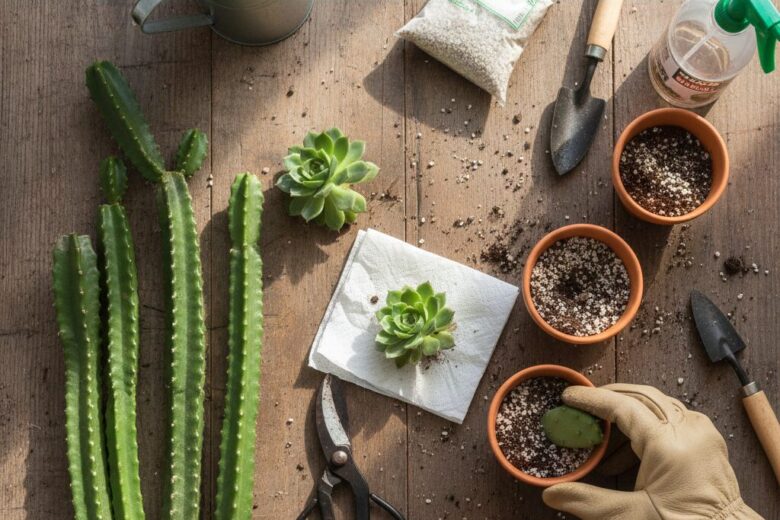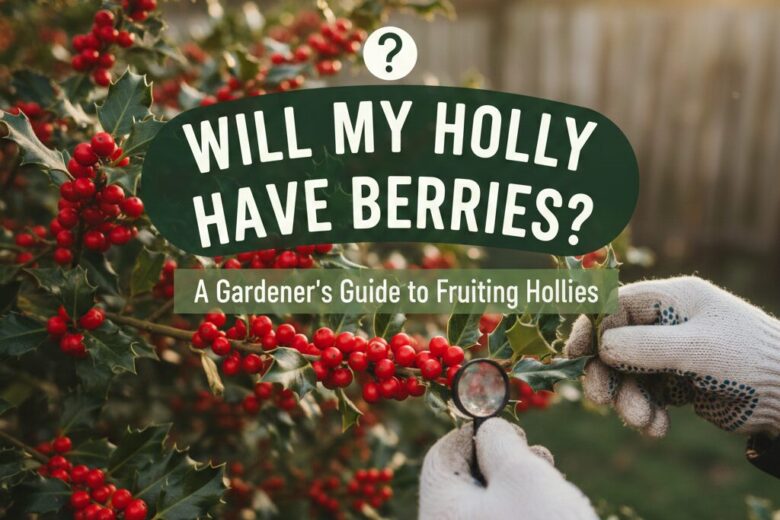Basil, with its vibrant green leaves and aromatic scent, is a beloved herb in many kitchens and gardens. Whether you’re growing it in your backyard, on a windowsill, or in a greenhouse, basil is known for its easy cultivation and versatility in cooking. However, nothing is more disheartening for a gardener than seeing those lush basil leaves start to wilt. Wilting basil can be a sign of various underlying issues, and understanding these causes is essential for keeping your plants healthy and thriving.
Wilting is often one of the first signs that something is amiss with your basil plants. The reasons behind this can range from environmental stress to disease, pest infestations, or improper care. Identifying the exact cause can be challenging, but it’s crucial for implementing the right solutions to restore your basil to its full glory. By taking the time to learn about the common causes of wilting and their remedies, you can ensure that your basil plants remain robust and productive throughout the growing season.
In this comprehensive guide, we’ll explore the top 10 reasons why your basil leaves might be wilting and provide effective solutions to address each issue. From watering practices and soil conditions to pest management and disease prevention, we’ll cover all the essential aspects of basil care. By understanding and addressing these common problems, you’ll be well-equipped to keep your basil plants healthy and flourishing, ready to enhance your culinary creations with their fresh, vibrant flavor.
Read Also: 25 Common Diseases Of Goats And How To Treat Them
1. Overwatering
Understanding Overwatering
Overwatering is one of the most common reasons for basil leaves wilting. Basil plants prefer well-draining soil and do not thrive in waterlogged conditions. Excessive water can suffocate the roots, leading to root rot and, consequently, wilting leaves.
Signs of Overwatering
Signs of overwatering include yellowing leaves, a soggy soil surface, and a foul odor from the soil. The leaves may also feel soft and limp rather than crisp and firm.
Solutions for Overwatering
To fix overwatering, first, allow the soil to dry out completely before watering again. Ensure that your pot or garden bed has adequate drainage to prevent water from accumulating. Consider using a well-draining potting mix, and water your basil only when the top inch of soil feels dry to the touch. If root rot has set in, you may need to trim away affected roots and replant your basil in fresh, well-draining soil.
2. Underwatering
Understanding Underwatering
Just as overwatering can harm your basil, so can underwatering. Basil requires consistent moisture to thrive, and a lack of water can quickly lead to wilting leaves.
Signs of Underwatering
Signs of underwatering include dry, brittle leaves that may curl at the edges. The soil will appear dry and may pull away from the edges of the pot.
Solutions for Underwatering
To remedy underwatering, water your basil thoroughly and regularly. Ensure that the water penetrates deeply into the soil, reaching the root zone. Mulching around the base of the plant can help retain soil moisture. During hot weather, you may need to water more frequently to keep the soil consistently moist.
3. Poor Soil Quality
Understanding Soil Quality
Basil thrives in nutrient-rich, well-draining soil. Poor soil quality, whether too sandy or too clayey, can hinder the plant’s ability to absorb water and nutrients, leading to wilting.
Signs of Poor Soil Quality
Signs of poor soil quality include stunted growth, yellowing leaves, and soil that remains too wet or too dry. The plant may also appear weak and spindly.
Solutions for Poor Soil Quality
To improve soil quality, amend your soil with organic matter such as compost or well-rotted manure. This will enhance soil structure, drainage, and nutrient content. For potted plants, use a high-quality potting mix designed for herbs. Regularly fertilize your basil with a balanced, organic fertilizer to provide essential nutrients.
4. Inadequate Light
Understanding Light Requirements
Basil requires plenty of sunlight to grow vigorously. Insufficient light can lead to weak, leggy plants with pale, wilting leaves.
Signs of Inadequate Light
Signs of inadequate light include elongated stems, pale or yellow leaves, and reduced leaf production. The plant may lean towards the light source, indicating it needs more sunlight.
Solutions for Inadequate Light
To ensure your basil receives adequate light, place it in a location where it gets at least 6-8 hours of direct sunlight per day. If growing indoors, consider using a grow light to supplement natural light. Regularly rotate the plant to ensure even exposure and prevent it from leaning towards one side.
5. Temperature Extremes
Understanding Temperature Sensitivity
Basil is sensitive to temperature extremes, thriving best in warm conditions. Both high and low temperatures can cause stress and wilting in basil plants.
Signs of Temperature Stress
Signs of temperature stress include leaves wilting, turning brown at the edges, or developing spots. Extreme cold can cause the leaves to blacken and die, while excessive heat can scorch the leaves.
Solutions for Temperature Stress
To protect your basil from temperature extremes, ensure it is planted after the danger of frost has passed in spring. During hot weather, provide shade during the hottest part of the day, and water more frequently to keep the soil cool and moist. In cooler weather, consider using row covers or moving potted plants indoors to protect them from frost.
6. Pests
Common Pests Affecting Basil
Pests such as aphids, spider mites, and whiteflies can infest basil plants, sucking the sap from the leaves and causing wilting.
Signs of Pest Infestation
Signs of pest infestation include visible insects on the leaves, sticky residue (honeydew), and distorted or discolored leaves. You may also notice fine webbing from spider mites.
Solutions for Pest Infestation
To manage pests, regularly inspect your basil plants for signs of infestation. Use insecticidal soap or neem oil to treat affected plants, and consider introducing beneficial insects like ladybugs to control pest populations. Keeping your garden clean and removing any debris can also help reduce pest habitats.
7. Fungal Diseases
Understanding Fungal Diseases
Fungal diseases such as downy mildew and Fusarium wilt can affect basil, causing wilting and other symptoms. These diseases thrive in warm, humid conditions and can spread quickly.
Signs of Fungal Diseases
Signs of fungal diseases include yellowing leaves, dark spots, and a fuzzy or powdery coating on the leaves. The plant may also show stunted growth and overall decline.
Solutions for Fungal Diseases
To prevent and treat fungal diseases, ensure good air circulation around your plants by spacing them properly. Water at the base of the plant to avoid wetting the foliage, and avoid overhead watering. Remove and destroy any infected plant parts, and consider using fungicidal sprays if necessary.
8. Nutrient Deficiencies
Understanding Nutrient Needs
Basil requires a balanced supply of nutrients to grow healthy and strong. Nutrient deficiencies can lead to poor growth and wilting leaves.
Signs of Nutrient Deficiencies
Signs of nutrient deficiencies include yellowing leaves, stunted growth, and poor leaf development. Specific symptoms can indicate different deficiencies, such as yellowing between the veins for magnesium deficiency.
Solutions for Nutrient Deficiencies
To address nutrient deficiencies, regularly fertilize your basil with a balanced, organic fertilizer. Incorporate compost or other organic matter into the soil to provide a steady supply of nutrients. Conduct a soil test to identify specific deficiencies and amend the soil accordingly.
9. Transplant Shock
Understanding Transplant Shock
Transplant shock occurs when basil plants are moved from one location to another, causing stress and wilting. This is common when transplanting seedlings or moving plants to a new container.
Signs of Transplant Shock
Signs of transplant shock include wilting leaves, slowed growth, and a general decline in plant health. The plant may take some time to recover and establish itself in its new environment.
Solutions for Transplant Shock
To minimize transplant shock, handle the plant gently during the move and water it thoroughly before and after transplanting. Ensure the new location has optimal growing conditions, including well-draining soil and adequate light. Provide shade and protection from extreme temperatures during the initial recovery period.
10. Improper Pruning
Understanding Pruning Practices
Pruning basil encourages bushier growth and prevents the plant from becoming leggy. However, improper pruning can stress the plant and lead to wilting.
Signs of Improper Pruning
Signs of improper pruning include wilted or yellowing leaves after cutting, reduced growth, and an overall unhealthy appearance. Over-pruning can also leave the plant vulnerable to pests and diseases.
Solutions for Improper Pruning
To prune basil correctly, use clean, sharp scissors or pruning shears to make clean cuts. Remove no more than one-third of the plant at a time, focusing on cutting just above a leaf node to encourage new growth. Regularly pinch off flower buds to keep the plant focused on leaf production.
Other Areas That Relate to This Topic
Soil pH and Its Importance
Soil pH plays a crucial role in nutrient availability for basil plants. Basil prefers slightly acidic to neutral soil with a pH between 6.0 and 7.0. Soil that is too acidic or too alkaline can lead to nutrient lockout, where essential nutrients are not available to the plant, resulting in poor growth and wilting.
To ensure your soil pH is within the optimal range, perform a soil test. If your soil is too acidic, add lime to raise the pH. If it is too alkaline, sulfur or peat moss can help lower the pH. Maintaining the right soil pH will improve nutrient uptake and promote healthier basil plants.
Companion Planting
Companion planting involves growing basil alongside other plants that benefit its growth and deter pests. Good companions for basil include tomatoes, peppers, and marigolds. These plants can improve the flavor of basil, repel harmful insects, and create a more diverse garden ecosystem.
Avoid planting basil near plants that can inhibit its growth, such as fennel and cucumbers. By choosing the right companions, you can enhance the health and productivity of your basil plants, reducing the risk of wilting and other issues.
Climate Considerations
Understanding the climate in your region is essential for growing healthy basil. Basil thrives in warm, sunny conditions and struggles in cold or overly humid environments. Adjusting your planting and care practices to suit your local climate can help prevent wilting and other stress-related problems.
In cooler climates, start basil indoors and transplant it outside once the weather warms up. In hot, dry regions, provide shade during the hottest part of the day and ensure consistent watering. Adapting your care routine to your specific climate will support robust, resilient basil plants.
Using Mulch
Mulching around your basil plants can help retain soil moisture, regulate temperature, and suppress weeds. Organic mulches, such as straw, compost, or shredded leaves, decompose over time and add nutrients to the soil.
Apply a 2-3 inch layer of mulch around the base of the plants, keeping it away from the stems to prevent rot. Mulching can reduce the frequency of watering, protect the roots from temperature extremes, and improve overall soil health, contributing to healthier basil plants.
Conclusion
Growing basil can be a rewarding experience, but it requires attention to detail and an understanding of the plant’s needs. By identifying and addressing the common causes of wilting, you can ensure your basil remains healthy and productive. Whether it’s adjusting your watering practices, improving soil quality, managing pests, or providing adequate light, each solution plays a vital role in maintaining vibrant basil plants.
Taking a holistic approach to basil care, considering factors such as soil pH, companion planting, climate, and mulching, will further enhance your success. With the right knowledge and practices, you can enjoy a bountiful harvest of fresh, aromatic basil, ready to elevate your culinary creations and brighten your garden.



